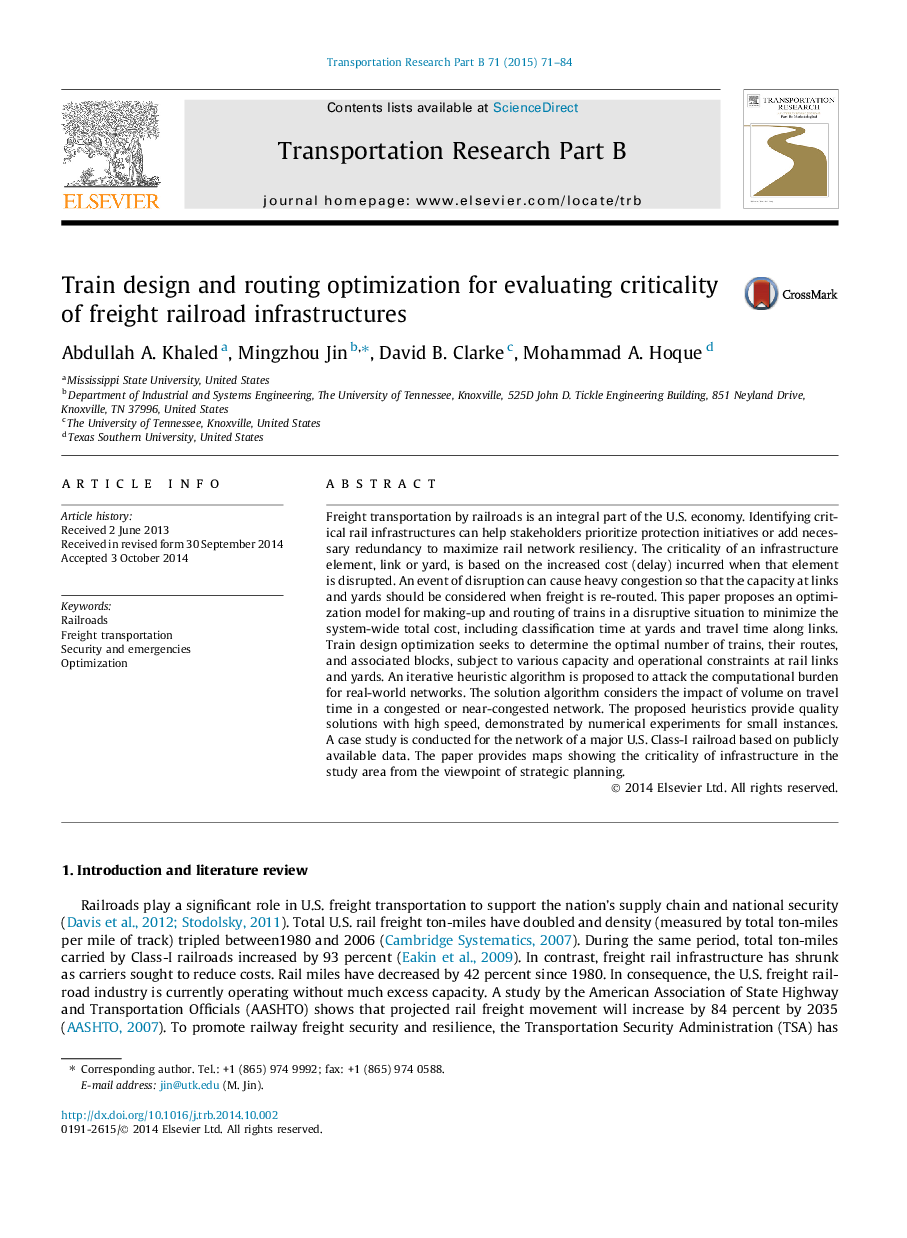| Article ID | Journal | Published Year | Pages | File Type |
|---|---|---|---|---|
| 1131817 | Transportation Research Part B: Methodological | 2015 | 14 Pages |
Abstract
Freight transportation by railroads is an integral part of the U.S. economy. Identifying critical rail infrastructures can help stakeholders prioritize protection initiatives or add necessary redundancy to maximize rail network resiliency. The criticality of an infrastructure element, link or yard, is based on the increased cost (delay) incurred when that element is disrupted. An event of disruption can cause heavy congestion so that the capacity at links and yards should be considered when freight is re-routed. This paper proposes an optimization model for making-up and routing of trains in a disruptive situation to minimize the system-wide total cost, including classification time at yards and travel time along links. Train design optimization seeks to determine the optimal number of trains, their routes, and associated blocks, subject to various capacity and operational constraints at rail links and yards. An iterative heuristic algorithm is proposed to attack the computational burden for real-world networks. The solution algorithm considers the impact of volume on travel time in a congested or near-congested network. The proposed heuristics provide quality solutions with high speed, demonstrated by numerical experiments for small instances. A case study is conducted for the network of a major U.S. Class-I railroad based on publicly available data. The paper provides maps showing the criticality of infrastructure in the study area from the viewpoint of strategic planning.
Related Topics
Social Sciences and Humanities
Decision Sciences
Management Science and Operations Research
Authors
Abdullah A. Khaled, Mingzhou Jin, David B. Clarke, Mohammad A. Hoque,
